Experts Reveal 12 Big Custard Mistakes You're Probably Making
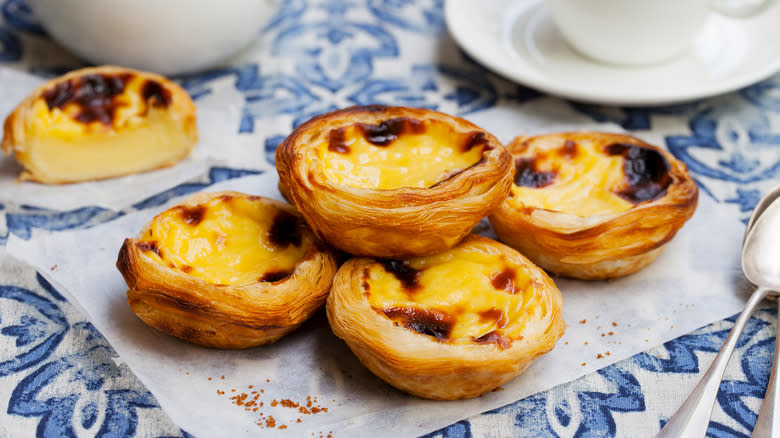
If you're a keen baker, it's important to master the art of custard. Not only is custard delicious poured over a range of desserts, but it's also often used as a filling for bakes such as profiteroles and Danish pastries. While it seems pretty simple, it can actually be extremely tough to get custard right. There are many ways it can go wrong — often leaving you with scrambled eggs instead of a silky smooth cream.
But once you know some of the common mistakes that everyone makes with custard, you can learn how to avoid them. First off, we have the basics, such as not knowing about the different types of custards. For instance, do you know your crème brûlée from your flan? Or your crème pâtissière from your crème anglaise? If you use a recipe for the wrong type of custard, you might be unhappy with the results. Then, there are all the ways that you can curdle, split, or burn your custard, such as adding the eggs too quickly, failing to mix starches through properly, and not stirring custards constantly.
Although we're enthusiastic cooks and experienced food writers here at Mashed, we wanted to call in the experts for this piece. So, we talked to a total of six experts, including food bloggers, chefs, and a registered dietician. Their expertise will help you get the perfect custard every time.
Read more: 12 Popular Ice Cream Brands, Ranked Worst To Best
Not Knowing The Difference Between Starch-Thickened And Egg-Thickened Custards
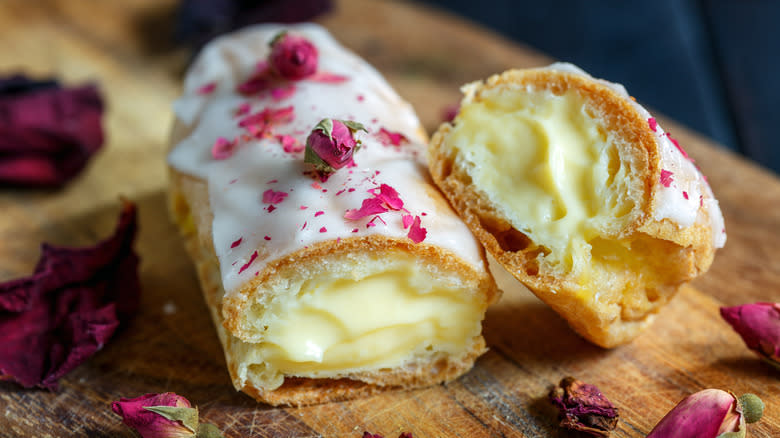
One of the first things to understand is the difference between egg-thickened and starch-thickened custards. While they're similar in essence, they're different enough that if you were aiming for one and got the other, you probably wouldn't be pleased with the results.
An egg-thickened custard is also known as a crème anglaise. But what is crème anglaise? It's a thin, pourable custard that's thickened with egg yolks. Using a crème anglaise as a base, you can make other forms of custard, such as crèmeux and bavarois, or Bavarian cream. "A simple, pourable egg custard like a crème anglaise is thickened by gently cooking the mixture until the egg reaches a setting temperature," says Amy Hand, a professional chef and recipe writer at The Skillful Cook. "This causes the mixture to thicken slightly and creates a silky texture," she adds.
Then, we come to starch-thickened custards. "A crème pâtissière is an egg custard thickened with cornstarch," Hand explains. "This results in a very smooth, thick custard that is great for fillings." There are other subtypes of crème pâtissière, including crème diplomat (crème pâtissière with added whipped cream) and crème mousseline (crème pâtissière with whipped butter).
Not Knowing The Difference Between Stovetop And Baked Custards
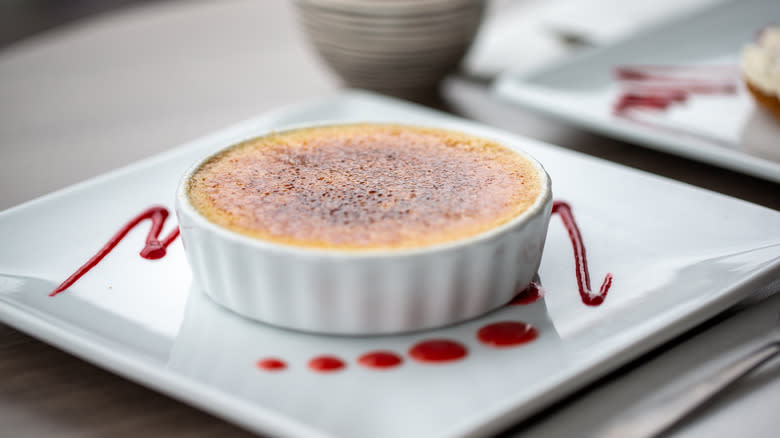
You can also categorize custards by their cooking method: baked or stovetop. Baked custards have a firm consistency from time spent in the oven, while stovetop custards tend to be looser, although they can range in thickness from pourable to pipeable. If you make the mistake of confusing the two, you're going to end up with something very different from what you were expecting.
Stovetop custard are any custards cooked in a pan on the stovetop. They're sometimes called stirred custards because they require a lot of stirring. We've already talked through the basics of crème anglaise, crème patisserie, and their related subtypes — these are all stirred custards. Curds — such as lemon curd and orange curd — can also be considered types of stirred custard.
But what about baked custard? To start with, you have simple baked custard, which is often baked in a ramekin and should have a soft, just-set consistency. Crème brûlée and crème caramel are also forms of baked custard, as are flans and pots de crème. There are other types of desserts that are often considered types of baked custard. For instance, there's clafoutis, a type of dessert made from cherries or other fruits cooked in a custard base. Plus, you have custard pies and custard tarts, which are filled with baked custard.
Adding The Eggs To Your Custard Too Quickly
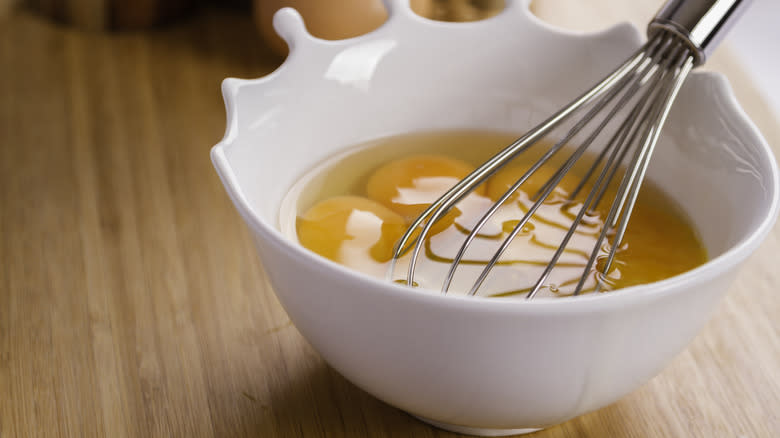
If curdling is a problem you've faced with your custard, there's a common mistake you might be making. Luckily, it's easy to avoid and can potentially be fixed if you've already messed it up. According to Nicole Durham, food blogger at Beeyond Cereal, "adding the eggs too quickly can cause the custard to curdle." This is a particular problem when you're making a stovetop custard, as you're adding eggs to hot milk. Make a misstep and you can easily be left with a scramble. To avoid this problem altogether, add the eggs to your milk or cream mixture slowly, and don't stop stirring.
However, sometimes it's too late, and the mistake has already been made. Or, despite your best efforts, you ended up with a curdled mixture anyway. Luckily, Durham has a fix for you — "To fix, quickly remove it from the heat and transfer it to a blender. Blend on low speed while gradually adding cold milk until the custard smooths out." This might sound like a faff, but it's worth the extra effort to try and save your curdled custard.
Overcooking Custard
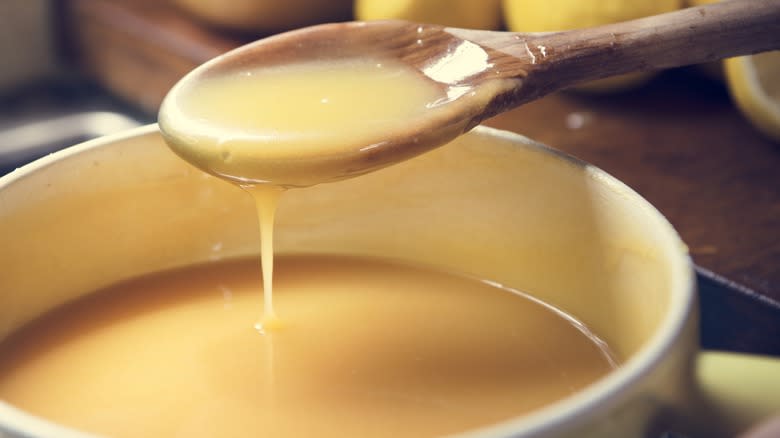
A lot of custard problems come back to overcooking. One issue is that "overcooking can result in a grainy texture or a rubbery consistency," says Nicole Durham. So, what do you do about it? "If the custard is slightly overcooked, it may still be salvageable by whisking vigorously to break up any graininess," she says. However, she notes that severely overcooked custard may not be salvageable, and you may need to start over.
But, that's not all. Rena Awada, owner and head chef of Healthy Fitness Meals LLC, says that overcooking can lead to custard that's curdled or split. "It happens when the eggs are overcooked, causing them to separate from the liquid and form lumps," she explains. "To fix this issue, remove the custard from heat immediately and strain it through a fine-mesh sieve to remove any lumps," she says. Another solution from Awada is to place the custard in an ice bath, which cools it down quickly and stops it from cooking further. You can then whisk it vigorously to incorporate the curdled bits into the mixture.
Overcooking can also be an issue with baked custards. "Custards will continue to cook even after you take them out of the oven," says Catherine Rall, registered dietitian, Happy V. She adds that, "it's essential to take them out just before they're done in order to let them finish properly." So, there are a range of issues that can come from overcooked custard and several ways to fix them.
Cooking Custard At Too High A Temperature
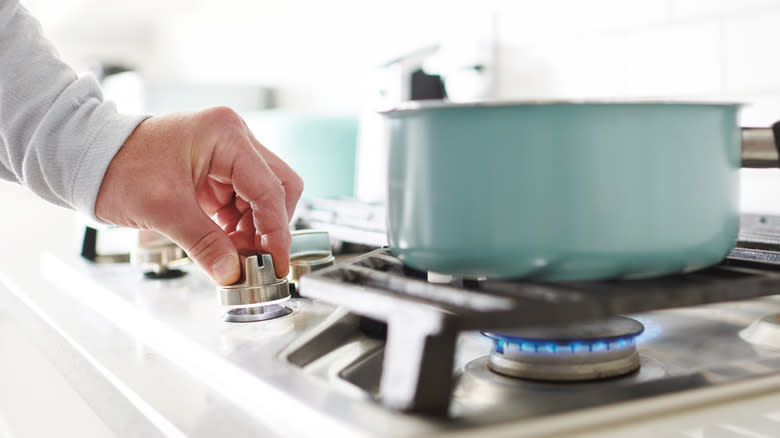
Jessica Randhawa, food blogger at The Forked Spoon, says that a common issue she's seen with people making custard — especially egg-based custard — is heating it at too high a temperature. She notes that this often leads to curdling. "This usually occurs because eggs in the custard cook too quickly and start to scramble instead of forming a smooth mixture," Randhawa says. "To prevent this, always cook the custard over low to medium heat and monitor its progress."
She explains that cooking custard over a water bath can also help by distributing the heat more evenly and gently. "If you do notice it starting to curdle, immediately remove it from the heat and place the pan in a bowl of ice water to halt the cooking process, whisking vigorously to smooth it out."
Rena Awada mentions another common problem — burnt or scorched custard. "This usually happens when the custard is cooked over too high heat or for too long," she notes. She advises cooking the custard over low heat and constantly stirring it to evenly distribute the heat. "I won't suggest trying to salvage burnt custard, as it may have a bitter and unpleasant taste," she says. "It's best to start over with a fresh batch." So, when cooking custard, think low and slow.
Not Mixing Starches Into Custard Correctly
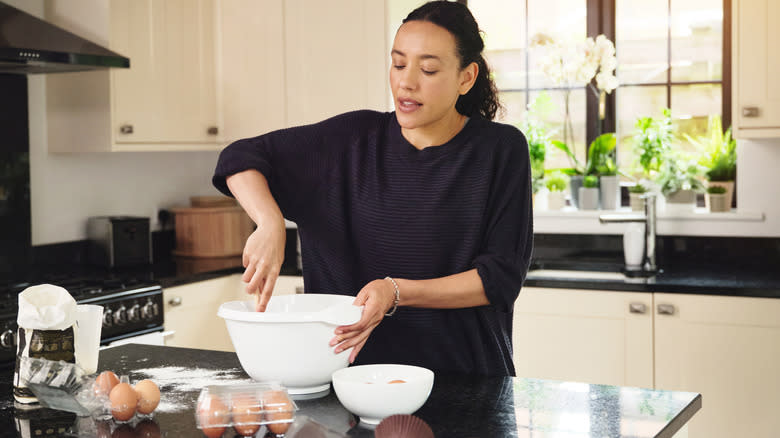
Is your custard lumpy or streaky? If it's a starch-based custard, it might be caused by not mixing in the starch correctly. We get it, thoroughly dissolving and mixing starches can take time. So, when you're in a hurry, you might give the mixture a custody beating and then move on to the next step. But this is a mistake.
Rena Awada says that lumps can form or streaks can appear through your custard "when the thickening agent, such as cornstarch or flour, is not mixed in properly." But how do you fix it? "You can strain the custard through a fine-mesh sieve to remove any lumps," Awada suggests. "Alternatively, you can also use a hand blender or immersion blender to blend the custard until it becomes smooth and creamy."
Of course, your best bet is to mix your starches correctly in the first place. Cornstarch is one of the most common starches used in custard, but not everyone knows how to use cornstarch correctly. Before adding it to your milk or cream, you should first make a slurry with cornstarch. This involves mixing the cornstarch with a small amount of water or milk to dissolve it. Then, when you add it to the rest of the mixture, it will combine thoroughly and won't cause lumps or streaks.
Putting Too Little Water In The Water Bath For Baked Custards
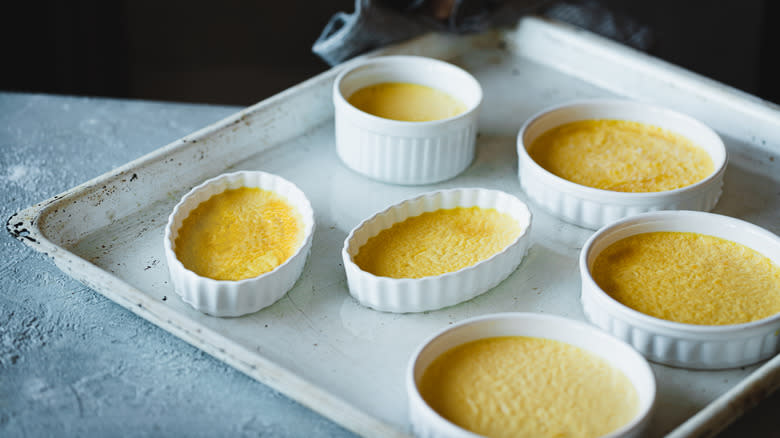
When making baked custard, most recipes call for a water bath. This is essentially a pan of water that the ramekins of custard sit in while they're in the oven. Custards are delicate and can easily overcook or curdle if exposed to high temperatures. Placing the custard dishes in a water bath helps moderate the heat. They're also prone to cracking, but the moist heat from the water bath helps stop rapid temperature changes and prevent this issue. Now, you might feel good about yourself because you've been using a water bath for your baked custards, but they're still coming out wrong — what gives?
According to Kevin Ashton, who's an executive chef and the culinary advisor at Restaurantji, you might not be putting enough water in the water bath. Just throwing in a cursory inch or so isn't enough. "Ensure your water level rises to the level of the custard in the cups," Ashton advises. "The primary object is to protect your custard from direct heat." Putting too little water in the bath can give you some of the same issues you get from not using a water bath at all. These include cracking, curdling, and a rubbery texture.
Undercooking Custard
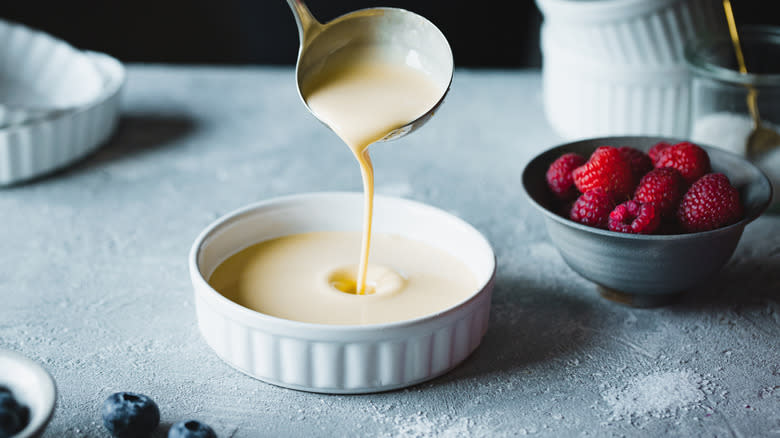
Undercooking is another common custard mistake. Anyone who's been struggling with runny custard might be making this simple error. We get why it happens — a lot of the advice about what to avoid doing while making custard centers around not overcooking custard or cooking it too quickly. So, in people's eagerness to avoid making sweet scrambled eggs, they end up going too far in the other direction. Then what you're left with has a consistency more like water than the silky, creamy consistency that you want. Runny custard can be a particular issue when you're trying to make custard thick enough to fill pastries or pipe between the layers of a cake. In this context, thin custard will just run or spill out.
"If your custard turns out too thin or watery, it could be due to undercooking," says Rena Awada. She has a solution for this issue — "To fix this, simply continue cooking the custard over low heat until it thickens to your desired consistency. If you don't have time for that, you can also add more cornstarch or flour slurry (a mixture of equal parts water and cornstarch/flour) to the custard and cook until thickened." She notes that runny custard can also be caused by not using enough starch in starch-thickened custards. So, if you're experiencing thin custard but you don't think you're undercooking it, this is another avenue to explore.
Not Stirring Constantly When Making Stovetop Custards

Stovetop custards are also called stirred custards, which is fitting because you need to stir them a lot. We mean, a lot. Rena Awada and Jessica Randhawa both note that frequent, if not constant, stirring is vital during the cooking process. It's not the kind of thing you can leave simmering on the stovetop while you tidy up the kitchen. You should be standing over it, wooden spoon in hand, stirring until your arm aches.
One of the reasons why stirring is vital is that custard can easily scorch or stick to the bottom of the pan without it. Continuous stirring helps distribute the heat evenly and keeps the custard from sticking and burning on the bottom. It also helps to evenly incorporate all the ingredients in the custard. This ensures that the eggs are fully mixed with the milk, sugar, and any flavorings, so you'll get a smooth, creamy texture. What's more, stirring ensures that the mixture heats evenly throughout, so that you aren't left with any parts that overheat or cook too quickly. This helps to avoid lumps or uneven texture in the finished custard. When you stir, you can also monitor the consistency of the custard as it cooks, so it doesn't end up too thick or gloopy.
Bringing Crème Anglaise To The Boil
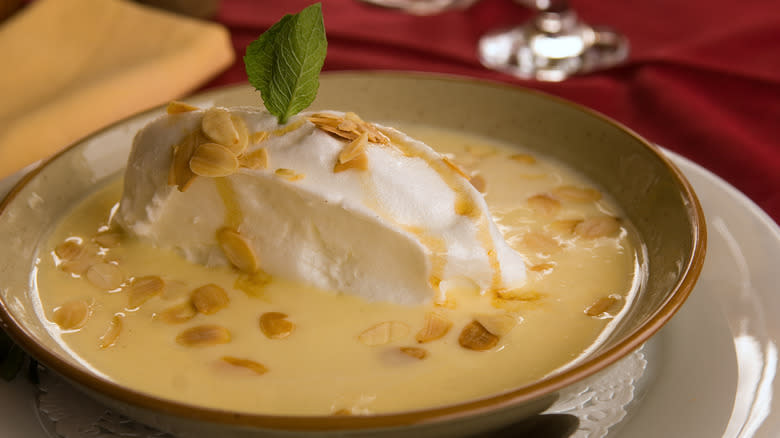
You might remember from earlier, but crème anglaise is a type of custard that's thickened only using eggs. The proteins in the egg thicken the custard, which gives you its silky-smooth texture. This is your classic pourable custard that you may use to drench an apple crumble or a sticky toffee pudding. If you're finding that your crème anglaise frequently curdles or overthickens, it might be because you're bringing it to a boil.
"The number one mistake made with crème anglaise is bringing it to a boil instead of heating the custard gently," says Amy Hand. "This will result in sweet scrambled eggs, which is highly unpleasant." You might think that a short simmer is just what your custard needs to thicken up, but avoid the temptation. All you'll get from it is a lumpy custard, filled with pieces of cooked egg.
Instead, you need to be patient. Yes, your custard might take a while to reach the perfect consistency, but that's okay. Just keep on stirring it constantly over low heat, letting the eggs slowly cook and thicken the custard. It can feel like it's not going to happen, but you'll get there in the end.
Not Bringing Crème Pâtissière To The Boil
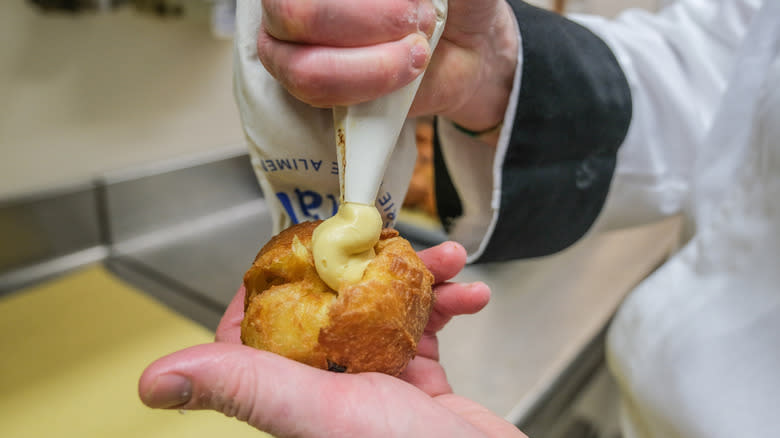
Now that we've drummed it into you that you should never boil crème anglaise, we're here to tell you that the opposite is true for crème pâtissière. Crème pâtissière has added starch, which gives the custard a thicker consistency, so it can be used to fill doughnuts and pastries or as a pipeable frosting.
"The number one mistake with starch-based custards like crème patisserie is NOT bringing the mixture to a boil," notes Amy Hand. "This is the complete opposite of a traditional egg custard." But why? "The cornstarch will only cook at boiling point, so failing to do this would result in a thin custard with a starchy aftertaste," she explains. If you're concerned that this will leave you with curdled lumps, you needn't be. The starch acts as a kind of protection to keep the eggs from cooking into a scramble.
So, how do you avoid making watery custard with graininess from the starch? It's quite easy. "Starches like cornstarch or flour need to be cooked until the mixture reaches a boil and then boiled for an additional minute or so to activate fully," advises Jessica Randhawa. "This ensures the custard will be set properly." If you're worried about scorching the custard, Randhawa has a tip: "Stirring constantly during this process prevents the bottom from burning and also ensures an even consistency."
Not Paying Attention To Ingredient Quality When Making Custard
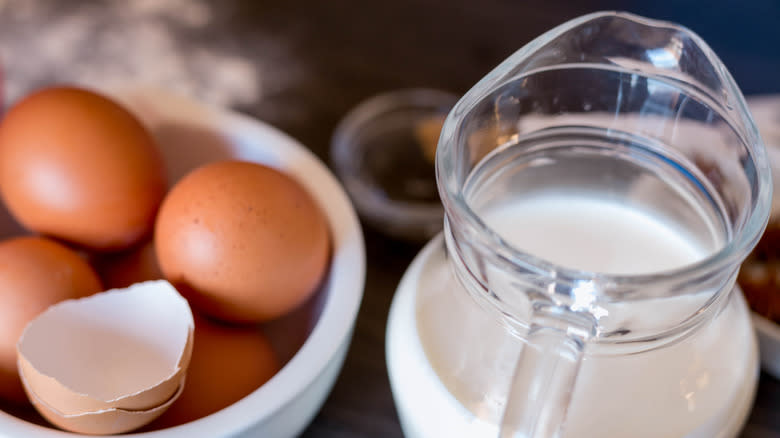
The beauty of custard lies in its simplicity. Most custards contain just a few ingredients — milk or cream, sugar, eggs, vanilla, and maybe some starch. But the thing with simple recipes like this is that ingredient quality matters. There aren't any strong flavors to hide behind, so if you use poor-quality ingredients, you'll end up with a subpar custard.
"People will also often make custard with whatever milk and eggs they have lying around; this is a mistake," says Catherine Rall. "Custards get a lot of their flavor from these two ingredients, so it's worth making sure you're using fresh, high-quality ingredients here for best results," she adds.
Vanilla also plays a huge role in flavoring custard, so it's worth splashing out on something nice. Use a vanilla bean paste or pure vanilla extract instead of cheap artificial vanilla essence. If you want to go all out, you could even use fresh vanilla pods. Infuse the milk or cream with them before adding the other ingredients. This is a more time-consuming process, but the fresh vanilla flavor is really worth it.
Read the original article on Mashed

 Yahoo Lifestyle
Yahoo Lifestyle 
